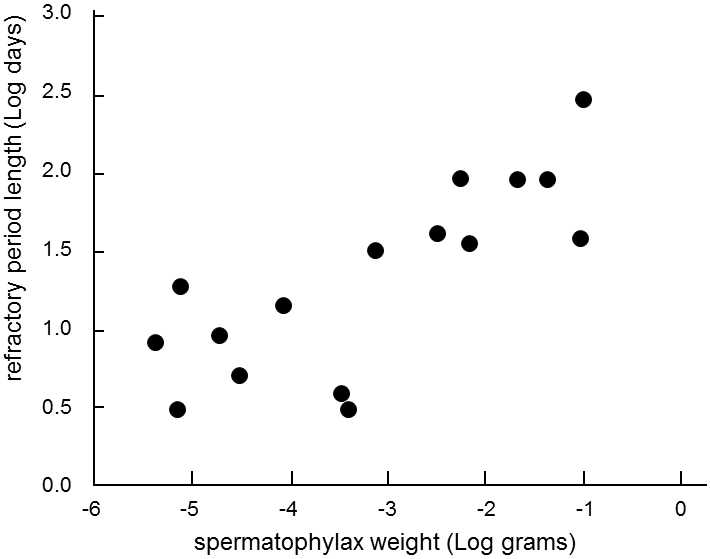XIV.8.1.1 Females can outweigh the drawbacks of costly macrogamete production by extending the pre-copulation stage of breeding
The energy invested into reproduction can be divided into two parts.These consist in the energy that a member of one sex cannot transfer to a member of the other sex, for example the energy required for production of its own gamete, and also the energy that can be transferred to a member of the opposite sex, e.g. the efforts invested in care for offspring.
The male and female do not have the same starting conditions in the battle for the smallest investment.The production of macrogametes is, in itself, an expensive matter, while the production of microgametes is relatively inexpensive in the typical case.If the male departs from the female following copulation and leaves the “choice” of whether to invest energy into embryos and offspring to the female, he basically has little to lose, because he invested very little into the production of microgametes.In contrast, the female has already invested more into the production of macrogametes (in mammals also into the development of the embryo) and thus can mostly not consent to reject the role of exclusive caregiver.
The result of the evolutionary game of “who’s the lazier parent” would thus seem to be decided in advance.However, the situation is somewhat more complicated.Males are not capable of agreeing on joint optimal strategy, they do not compete only with females, but with even greater intensity with one another.This can be effectively exploited by their evolutionary adversary, the female.If she manages to force the male to invest a great deal of energy into reproduction before the actual act of copulation, she balances out her own handicap and thus creates preconditions for fairer distribution of energy invested after copulation.Thus, it is advantageous for the female to prolong the precopulation phase of reproduction, to prolong the phase of courtship and delay copulation, for example until a nest is built or stocks of food are accumulated, or to require that the male provide gifts prior to the actual copulation (Wedell 1993; Leimar, Karlsson, & Wiklund 1994) (Fig. XIV.8).With each joule and each hour that the male expends in the precopulation phase of reproduction, the reproductive strategy based on unselective reproduction and zero care for progeny becomes less advantageous and the chance of more even distribution of parental care increases for the female.

Fig. XIV.8 Increasing the male investment into offspring through gifts. In grasshoppers of the Tettigoniidae family, in addition to an ampulla containing sperm, the male gives the female a wedding gift during copulation, a spermatophylax, which the female eats while the sperm penetrate from the spermatophore ampulla into her genital orifice. Interspecies comparative measurements demonstrated that the size of the spermatophylax is positively correlated with the length of the time interval during which the female subsequently refrains from copulating with other males. Thus, the more the males invest into wedding gift, the better they ensure their paternity of the offspring. According to Wedell (1993).
However, intrasexual competition occurs not only among males, but also among females.Thus, the course of the evolutionary game of the lazier parent can be very complicated and its outcome is not easy to predict in advance.It depends on the intensity of the intrasexual competition among males and among females, the cost of producing the individual types of gametes, the cost of bringing up offspring and a great many other factors related to the ecology of the particular species.The game can end up anywhere between biparental and uniparental care for offspring, where the winner, the lazier, certainly need not always be the male.s
